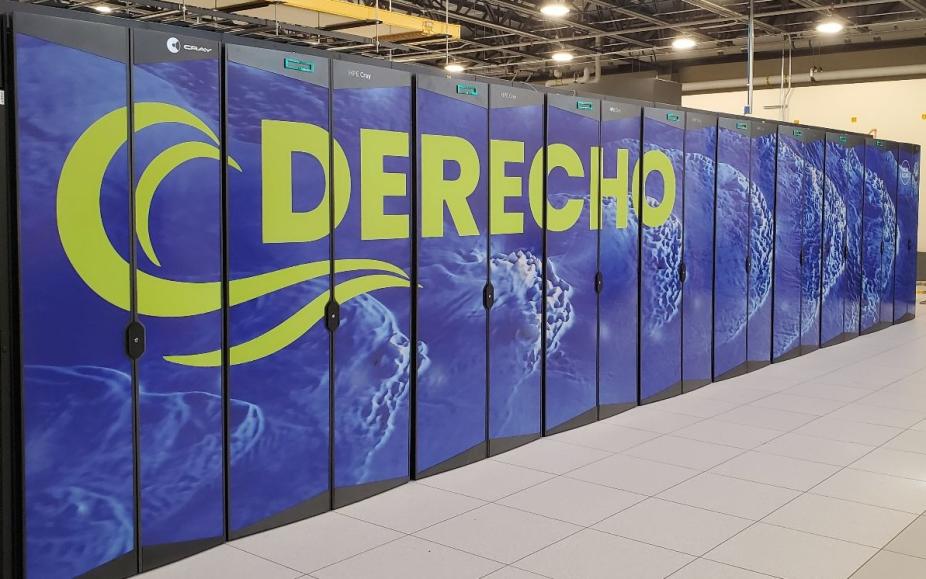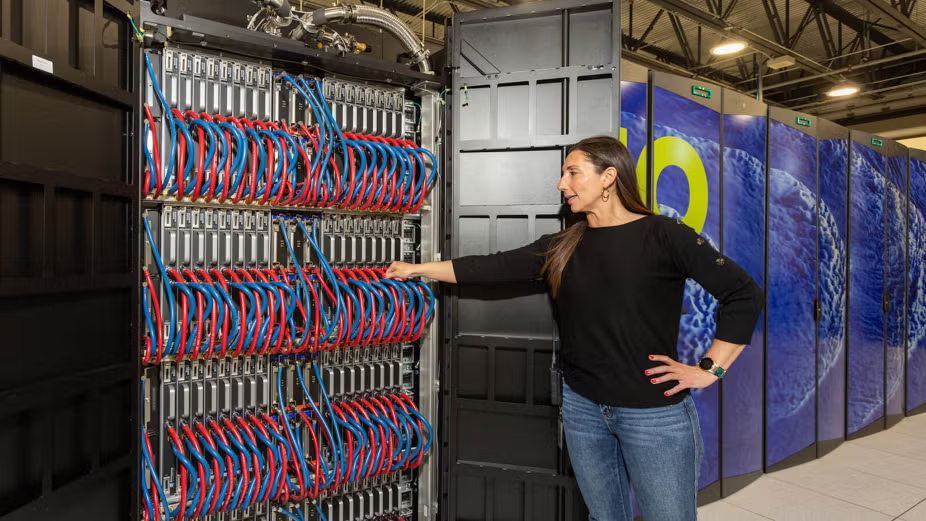Derecho
NSF NCAR’s current flagship supercomputing system

The Derecho system installed at NWSC.
Installed in 2023, Derecho is helping scientists conduct research needed to better understand a range of phenomena that affect society, from the behavior of major wildfires to eruptions of solar storms that can threaten GPS and other sensitive technologies.
University researchers and NSF NCAR scientists can use Derecho to pursue work in Earth systems science and related sciences. To access these supercomputers, as well as NSF NCAR’s high-end storage systems and other resources, researchers and educators can apply for allocations via the processes defined for each of the communities we support.
Derecho features 2,488 compute nodes, each with 128 AMD Milan cores, and 82 GPU nodes, each with four NVIDIA A100 GPUs. An HPE Cray EX cluster, Derecho has a peak performance of 19.87 petaflops and delivers about 3.5 times the scientific throughput of NSF NCAR’s prior Cheyenne system.

Summer Wasson demonstrates where the cold water goes to keep the Derecho supercomputer cool. (Matt Idler for Cowboy State Daily)
Read news stories related to Derecho and computing at NSF NCAR.
Derecho is the first system at NSF NCAR with a substantial GPU partition. Four emerging and expanding scientific use cases influenced the design of Derecho: data assimilation, GPU-based modeling, machine learning, and high-throughput computing. These growth areas represent substantially different usage and hardware requirements and led to the ultimate Derecho configuration.
Derecho Configuration
| 318,464 CPU cores | 2,488 CPU-only nodes 64-core AMD EPYC 7763 Milan processors 128 cores and 256 GB DDR4 memory per node |
| 328 total GPUs | 82 GPU nodes 4 NVIDIA A100 Tensor Core GPUs per node 40 GB HBM2 memory per GPU 600 GB/s NVIDIA NVLink GPU interconnect 64 AMD Milan cores and 512 GB memory |
| HPE Slingshot v11 interconnect | Dragonfly topology 200 Gbps per port per direction 1.7-2.6 µs MPI latency GPU nodes—four Slingshot injection ports CPU nodes—one Slingshot injection port |